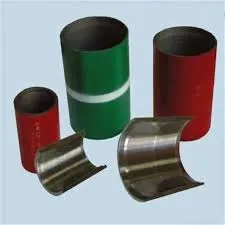- Afrikaans
- Albanian
- Amharic
- Arabic
- Armenian
- Azerbaijani
- Basque
- Belarusian
- Bengali
- Bosnian
- Bulgarian
- Catalan
- Cebuano
- Corsican
- Croatian
- Czech
- Danish
- Dutch
- English
- Esperanto
- Estonian
- Finnish
- French
- Frisian
- Galician
- Georgian
- German
- Greek
- Gujarati
- Haitian Creole
- hausa
- hawaiian
- Hebrew
- Hindi
- Miao
- Hungarian
- Icelandic
- igbo
- Indonesian
- irish
- Italian
- Japanese
- Javanese
- Kannada
- kazakh
- Khmer
- Rwandese
- Korean
- Kurdish
- Kyrgyz
- Lao
- Latin
- Latvian
- Lithuanian
- Luxembourgish
- Macedonian
- Malgashi
- Malay
- Malayalam
- Maltese
- Maori
- Marathi
- Mongolian
- Myanmar
- Nepali
- Norwegian
- Norwegian
- Occitan
- Pashto
- Persian
- Polish
- Portuguese
- Punjabi
- Romanian
- Russian
- Samoan
- Scottish Gaelic
- Serbian
- Sesotho
- Shona
- Sindhi
- Sinhala
- Slovak
- Slovenian
- Somali
- Spanish
- Sundanese
- Swahili
- Swedish
- Tagalog
- Tajik
- Tamil
- Tatar
- Telugu
- Thai
- Turkish
- Turkmen
- Ukrainian
- Urdu
- Uighur
- Uzbek
- Vietnamese
- Welsh
- Bantu
- Yiddish
- Yoruba
- Zulu
coupling tube fitting
Understanding Coupling Tube Fittings A Comprehensive Guide
Coupling tube fittings are essential components in a wide array of applications, primarily in plumbing, HVAC systems, and industrial processes. They serve the crucial role of connecting two tubes or pipes to ensure a seamless flow of fluids while preventing leaks. This article dives deep into the characteristics, types, applications, and installation techniques related to coupling tube fittings.
What Are Coupling Tube Fittings?
Coupling tube fittings, often referred to simply as couplings, are mechanical devices that join two sections of tubing or piping together. Typically made from materials such as brass, stainless steel, or plastic, these fittings are designed to withstand various pressures and environmental conditions. The primary purpose of these fittings is to create a secure, leak-proof connection, which is vital for maintaining the integrity of the entire piping system.
Types of Coupling Tube Fittings
Coupling tube fittings come in a variety of designs to suit different applications. Here are some common types
1. Straight Couplings These are the most basic form of coupling fittings, used to connect two pieces of tubing in a straight line. They are straightforward to install and are suitable for a variety of applications.
2. Reducing Couplings These fittings allow for the connection of two tubes of different diameters. They ensure that the flow of fluid remains continuous even when transitioning between sizes.
3. Union Couplings These provide a removable joint, making it easier to disconnect and reconnect pipe sections for maintenance or repairs. They are especially useful in applications where frequent disassembly is required.
4. Compression Couplings These fittings create a secure seal by using a compression mechanism. They are ideal for connecting rigid tubes without the need for soldering or welding.
5. Welded Couplings Used in high-pressure applications, these couplings are welded directly to the pipes, resulting in a permanent and robust connection.
Applications of Coupling Tube Fittings
The versatility of coupling tube fittings means they are found in various industries, including
- Plumbing In residential and commercial plumbing systems, couplings are essential for connecting pipes that transport water, gas, and other fluids
.coupling tube fitting

- Hydraulics In hydraulic systems, coupling fittings enable the efficient transfer of fluids under high pressure, critical for machinery operation.
- HVAC Systems In heating, ventilation, and air conditioning installations, coupling fittings help connect ductwork and refrigerant lines.
- Automotive Couplings are widely used in vehicles, connecting fuel lines, brake systems, and other critical fluid transfer systems.
Installation Techniques
Proper installation of coupling tube fittings is crucial for ensuring leak-free operation. Here are some key steps involved in the installation process
1. Preparation Ensure that both ends of the pipes to be connected are clean and free from debris. Any imperfections can compromise the seal.
2. Cutting Use a tube cutter for straight cuts. Jagged cuts can lead to leaks and are challenging to seal properly.
3. Deburring Remove any burrs or sharp edges from the cut ends to ensure a smooth fit.
4. Insertion Insert the tube into the coupling fitting until it reaches the designated stop. This guarantees a snug fit.
5. Securing Depending on the type of coupling, secure the fitting by tightening it properly. For compression fittings, use a wrench to tighten without over-torquing.
6. Testing Once installed, conduct a pressure test to ensure that there are no leaks. This step is critical, especially in high-pressure applications.
Conclusion
Coupling tube fittings play a vital role in the connectivity of tubing and piping systems. With various types available for diverse applications, understanding their characteristics and installation techniques is essential for anyone working in related fields. Whether in plumbing, HVAC, hydraulics, or automotive industries, the right coupling fitting can mean the difference between a successful installation and costly leaks or failures. By choosing the appropriate fitting and following proper installation protocols, one can ensure optimal performance and longevity of their piping systems.
-
Well Casing Extension Couplings – Applications and InstallationNewsJun.06,2025
-
Types of Crossover Subs in Drilling & CompletionNewsJun.06,2025
-
Key Features of High-Quality Tubing Pup JointsNewsJun.06,2025
-
Installation and Maintenance Tips for Steel Couplings for PipeNewsJun.06,2025
-
How to Select the Right Pup Joint for Oil & Gas OperationsNewsJun.06,2025
-
Applications of Stainless Steel Pipe CouplingsNewsJun.06,2025







